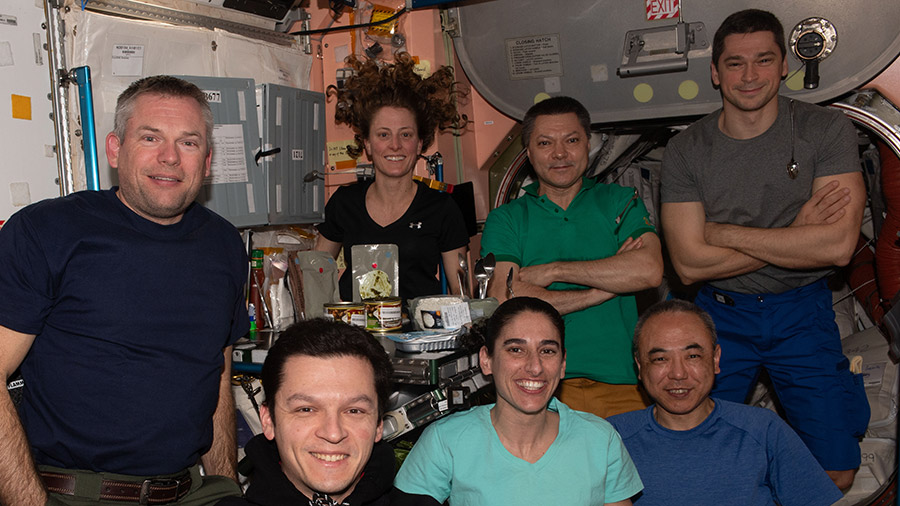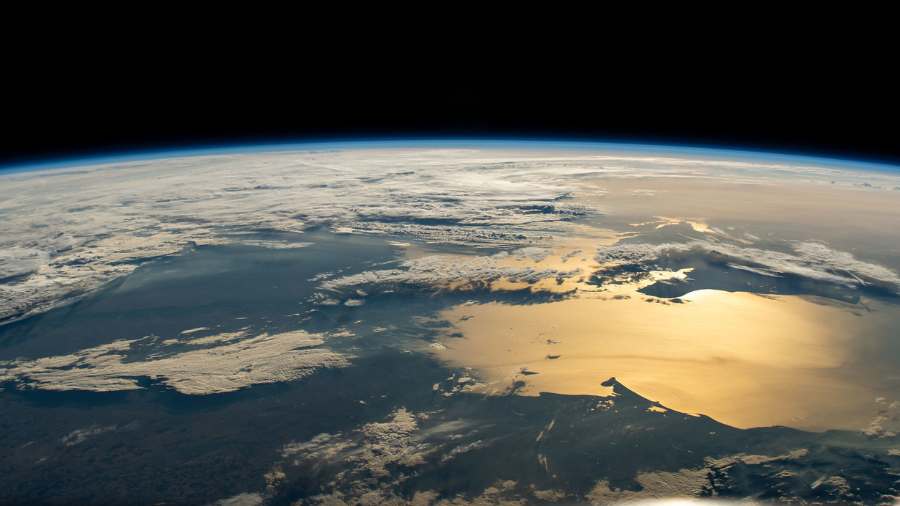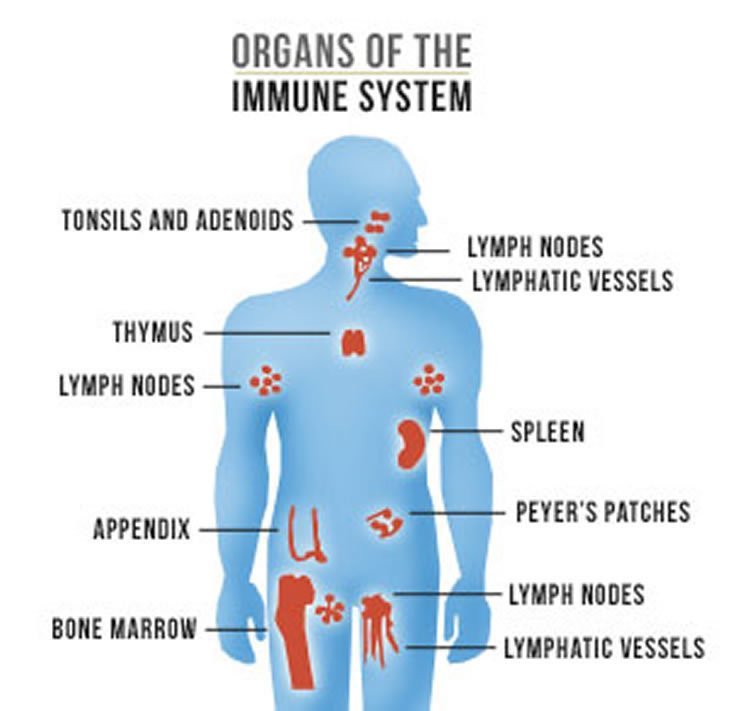
A Roscosmos space freighter is due to arrive at the International Space Station tonight and replenish the Expedition 68 crew. While they wait for the space delivery, the orbital residents stayed busy throughout Thursday working on more eye and vein scans, a plant habitat, and a spacesuit.
At 10:49 p.m. EDT tonight, two cosmonauts will be on duty when the ISS Progress 82 resupply ship docks to the orbiting lab’s Poisk module. Commander Sergey Prokopyev and Flight Engineer Dmitri Petelin will be inside the Zvezda service module monitoring the Progress 82’s rendezvous and docking. A few hours after the vehicle arrives and the pressure equalizes with the station, the duo will open the hatches and begin offloading about three tons of food, fuel, and supplies.
Prokopyev and Petelin called down to mission controllers during Thursday morning to discuss and prepare for the automated approach of the Progress cargo ship. The duo will be at the controls of the telerobotically operated rendezvous unit, or TORU, inside Zvezda ready to take manual control of the approaching spacecraft on Thursday night if necessary. The two cosmonauts along with Flight Engineer Anna Kikina are sleep-shifting today to get ready for the cargo mission’s nighttime arrival.
Advanced microgravity science is continuing at full pace aboard the space station as the astronauts researched how their bodies adapt to microgravity. Scientists on the ground use the observations to help crews stay healthy and fit during long-term space missions, as well as adapt quicker when returning to Earth’s gravity environment.
Eye and vein scans were back on the orbital research schedule on Thursday morning as NASA Flight Engineer Frank Rubio powered on the Ultrasound 2 scanner for the ongoing biomedical research. He took charge as crew medical officer and first scanned the eyes of NASA Flight Engineer Nicole Mann during the 15-minute session. Next, Rubio spent an hour imaging Mann’s neck, shoulder, and leg veins, with the ultrasound device to help doctors understand how the human body adapts to living and working in space.
NASA Flight Engineer Josh Cassada serviced the Plant Habitat located in a science rack installed inside the Kibo laboratory module. He replaced carbon dioxide bottles and checked connections on the automated space botany research facility. Packed with sensors and components that control temperature, relative humidity, carbon dioxide levels and light intensity, the Plant Habitat enables plant growth experiments for up four-and-a-half months at a time.
Astronaut Koichi Wakata of the Japan Aerospace Exploration Agency (JAXA) spent his day inside the Quest airlock working on spacesuit maintenance with assistance from Rubio. The duo cleaned the spacesuit’s cooling loops and reconfigured the suit’s components in anticipation of upcoming spacewalks.




